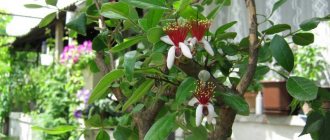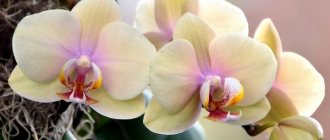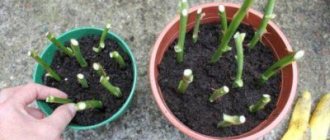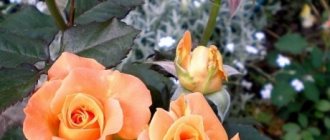How the Chinese rose blooms
Chinese rose (indoor) is quite popular among gardeners not only because of its easy maintenance, but also because of its beautiful flowers. They delight with their inflorescences for a short time, only two or three days. But new opening buds constantly appear on the bush, one after another. Therefore, it seems that hibiscus blooms for a long time. But this is provided that the bush is complete and healthy. A photo of a Chinese rose taken during the flowering period is a stunning sight.
The color scheme of the plant can be red and white, purple and orange, and one bud can combine two palettes. These days, specialty stores offer low-growing varieties of hibiscus (hybrids of Dutch species).
Propagation by seeds
Propagation by varietal seeds is a very exciting activity for amateur gardeners who like to experiment and can get a variety of colors at home. The seeds retain excellent germination for five years, but before planting at home, you need to disinfect the seed in a weak solution of potassium permanganate.
Pre-sowing seed treatment
It is advisable to plant seeds in late February - early March.
For this you will need:
- Soil mixture.
- Growth stimulants - epin or zircon.
- Mini greenhouse.
Before sowing at home, you need to soak the seeds overnight so that the solution barely covers them, because the embryos need oxygen. Next, place the hibiscus seeds on damp gauze. Place the gauze bundle in a plastic bag (make holes for air ventilation) or in a mini-greenhouse for a thermal effect. From time to time the greenhouse needs to be opened for ventilation. Such care is necessary so that the seeds do not die and make it possible to propagate the Chinese rose.
Warmth and moisture are important conditions for seed germination.
Growing Chinese roses at home - transplantation stage
The basic rules for growing a Chinese rose at home are its replanting and propagation. The young plant is transplanted in the spring into prepared soil. The flower loves fertilizers.
What is mixed for nutrient soil:
- turf soil (4 kg);
- deciduous soil (3 kg);
- humus soil (1 kg);
- sand (1 kg).
A layer of drainage is placed in the container in which the hibiscus will be planted. The flower grows quickly, so replanting the plant may be necessary several times a year. Young shoots are pruned. Already an “adult” Chinese rose is not disturbed by transplants, but simply removes the top layer of soil and replaces it with a nutritious one.
Other methods of rooting cuttings
Rooting hibiscus by cuttings is also carried out:
- in damp sand, cutting in February, for 2 months at an air temperature of +22-24°C, covering the container with glass or film;
- in a container with water mixed with a growth stimulator, water is constantly added as it evaporates. The root formation process will be long, and when a sufficient number of roots are obtained, the cuttings are planted in prepared soil.
Propagation by seeds
It is better to purchase hibiscus seeds (photo) at a flower shop and first prepare them for sowing. The seeds should be of the current year from the first generation F1 hybrids, and the soil for planting should be light and nutritious, permeable to air, consisting of 1 part perlite and 2 parts leaf humus. Water should not accumulate in the soil, so there must be drainage underneath it.
How to grow hibiscus from seeds at home:
- Place the seeds for 12 to 24 hours in water with a root formation and growth stimulator: Epin, Fumara or Zircon. The container should be flat and shallow so that the solution covers the grains only 2/3 of the height. If the solution does not completely cover the seeds, then they will not “suffocate”. They need to be stirred periodically with a wooden peg.
- The seeds are washed and degreased with a weak solution of potassium permanganate for 1 minute and placed on a damp cloth or disks of 5-7 pieces. for germination. The fabric and discs are moistened with warm water; it should not drip or erode from them. For this purpose, the discs are covered with a plastic cup with holes for ventilation. The “greenhouse” needs to be kept at a temperature of +23-25°C for 4-5 days. If necessary, moisten the napkin or discs with a spray bottle, since a dry cloth does not promote germination of grains.
- As soon as the sprouts appear, they are moistened with water and ventilated, then planted in the ground. The pots should be clay or plastic and have drainage holes and a layer of expanded clay 2-3 cm high. The soil should occupy 3/4 of the pot, it needs to be slightly crushed and moistened. The size of the pot is large and tall, since the main roots from the seeds also grow large and long.
- Plant 1-3 seeds in one pot so that the sprouted part is on its side. Then they are sprinkled with earth to a height of 1-1.5 cm without compaction, otherwise there will be no air flow to the embryos, which will lead to their rotting.
- Place containers with seeds in a bright place with an air temperature of + 28°C. There should be no direct rays of the sun, but diffused light is needed in abundance so that the stems do not stretch and fall. When grown from seeds in winter, additionally install fluorescent lamps. Cover the pot with a plastic bag, ventilate the greenhouse every day, moisten the soil with a spray bottle, and when the top layer dries out.
- Hibiscus picking is carried out 2 weeks after the appearance of sprouts and roots.
- Fertilizing is not carried out during the first month of life, and then it is carried out once every 2 weeks, using a weak liquid solution of complex fertilizer, but without excess nitrogen additives.
About swamp hibiscus
There is also swamp hibiscus. Growing from seeds or using cuttings of this perennial subtropical shrub (tree) can be done both in an apartment or office, and in an open greenhouse or in a garden according to the same scheme as the tree-like Chinese rose.
Swamp hibiscus has a straight stem with a woody lower part and dark brown bark. It has a powerful and well-developed root system; the plant can reach a height of up to 3 m and have a spectacularly developed crown. The heart-shaped leaves have denticles along the edges and a glossy surface on top; the bottom is covered with fluff. The buds bloom with bright red, lilac and violet petals with carmine spots at the base. The diameter of the corolla can be 15 cm.
Flowering lasts throughout spring-summer, covering the first half of autumn. The flowers themselves are pleasing only for one day: the buds bloom in the morning, and in the evening the petals wither and fall off. Instead of a flower, the fruit remains: a capsule with 5 valves. They contain large quantities of pubescent brown, wine-colored seeds with a light woody aroma.
Chinese rose shoots for propagation
In the summer, the stems of the Chinese rose are already growing; how to take a shoot for propagation:
- select a stem with a diameter of 0.5 cm;
- cut off the top part to 15 cm and remove the leaves from below;
- plant in a container with wet sand or soil mixture, as indicated above in the article;
- we withstand all stages of rooting when placing the container with the shoot in a lighted place;
- moisturize as needed.
Radical shoots or suckers may appear around an adult bush, usually on the south side or in the free space near the root system. If you have garden hibiscus, propagation is carried out as follows: straight shoots are separated and transplanted into open ground in the garden or into a large pot. The offspring feeds from the mother bush for a year until its own roots develop. In early spring, after the snow has melted and the soil has warmed up, it is separated from the root system and planted in another place. At the same time, it is shortened by 1/3 of the length.
Twigs and leaves for propagation
How to grow a Chinese rose from a twig? In spring, the longest branch is bent to the ground, secured in the furrow and covered with soil. It is moistened for 30 days until strong roots appear. Then they are cared for, like the main plant, until replanting in the fall or spring of next year. Young seedlings with good lighting and warm weather are able to bloom in late summer. When pruned, hibiscus plants are stimulated to grow and bloom.
If you cut a leaf of a Chinese rose with a “heel”, then it can be considered a cutting, so it must go through the entire rooting procedure, as for a cutting. Slowly but surely the “heel” will take root and become a full-fledged plant.
Reproduction by grafting
Subtleties of reproduction:
- select only young hibiscus for grafting cuttings into the crown;
- the procedure is carried out in June to mid-July;
- there should not be more than 5 scions on one bush;
- grafted plants require careful care, a bright place without direct sunlight, and regular fertilizing during watering;
- in winter, you need to use a fluorescent lamp for additional illumination for 5 hours so that the grafts do not die;
- You can plant several varieties of hibiscus on one bush;
- It can be propagated by copulation and budding.
Copulation method
If you have been given a cutting of another type of hibiscus, but it is not possible to carry out the grafting procedure on the same day, then you can wrap it in moistened moss, such as sphagnum, and wrap it in a plastic bag, after removing all the leaves, leaving three buds. In this form, the cutting can be safely stored for up to 3 days.
The scion and rootstock are cut obliquely so that the cut lines coincide when joined. Fixed with a strip of polyethylene, 10 mm wide, and a cord. Sometimes they use tape, turning the adhesive surface outward. It is necessary to ensure that when fixing the sections do not move, they are wrapped tightly. All growth points are removed from the hibiscus rootstock below the graft. The bush is covered with a plastic bag and placed near a fluorescent lamp.
Budding method
More often, vaccinations take root using the budding method: implanting a bud under the bark of a 2-year-old rootstock. A T-shaped incision is made on the bark of the rootstock and a peephole is inserted from the cutting (scion), which has previously stood in water for 1.5-2 hours. At the grafting site, the rootstock should have smooth bark without buds. The transverse incision is not made very deep, and from its middle a longitudinal incision is made to a length of 1.5 cm. Using a budding knife, the incised bark is moved slightly apart to prepare a place for the peephole, then it is immediately returned to its place, leaving a hole at the top of the incision where the peephole is inserted .
With one movement of a knife, cut off the largest bud (eye) with the presence of bark and a thin layer of wood. It is inserted into the hole of the rootstock and tightly tied with tape for such purposes, but not with tape or electrical tape. Cover the top with a transparent polyethylene bag and place it in a lighted place so that direct rays of the sun do not fall for 1-1.5 months.
Growing process - propagation of Chinese roses by cuttings
All plants have several methods of reproduction.
How to grow hibiscus:
- using seeds;
- by dividing the bush;
- layering;
- cuttings
Loading….
Most often, cuttings are used as planting material. They are able to quickly produce roots and grow. Propagating Chinese roses from cuttings is not a difficult process.
In any summer month you need to cut off the top of a young shoot. It is important that the planting material contains at least two internodes.
The cuttings need to be treated with a growth stimulator and rooted in a container with prepared soil.
Peat and humus can be added to the soil. It is better if the transplanted cuttings grow in warm temperatures (minimum 22 degrees, maximum 25). After thirty days, the young shoot will be completely rooted.
Saplings
Garden hibiscus is propagated by bending the lower shoot to the ground in the spring, covering it with earth and pinning it. The soil should be moistened for a month until roots appear. Rooted seedlings can be transplanted in the fall or next year in the spring.
With sufficient heat and lighting, the seedlings begin to grow actively and bloom by the end of summer. requires pruning to stimulate growth and flowering .
When choosing a propagation method, you should remember that cuttings are considered optimal. Plants obtained from seeds will not bloom soon.
Feeding for Chinese roses
Chinese rose (indoor) is very responsive to fertilizers. The plant is fed only in the warm season: spring or summer. In cold weather, hibiscus easily survives without additional nutrients. Fertilizers are applied once every two weeks.
There are a lot of complex “foods” for feeding indoor flowers. It is better to purchase them in flower shops.
Fertilizers should include the following elements:
- potassium;
- phosphorus;
- nitrogen.
For the Chinese rose to fully grow, it is necessary to feed its horse system once a month. It is better to dilute all fertilizers in warm, settled water. It is also worth spraying the greenery of the plant with substances containing nitrogen. Do not allow the solution to come into contact with hibiscus flowers, as this may cause stains to appear on them.
You should not “overfeed” or “underfeed” the flower with fertilizers, as the plant can die. It is because of this that the leaves of the Chinese rose turn yellow. Gradually all the greenery will fall off.
How to grow at home?
You need to be careful when choosing a location: hibiscus needs good lighting and protection from the sun . Drafts are unacceptable - the plant cannot tolerate them.
The optimal temperature is 12 -16 degrees, not lower than 10 degrees in winter. Hibiscus requires abundant watering in summer, moderate in autumn, and limited in winter. In summer, it is recommended to spray and fertilize from March until September inclusive.
Do not overdry the earthen ball in the pot, otherwise the leaves may fall, loss of buds and lack of flowering in the future.
What to do when the castings of a Chinese rose turn yellow
If yellow spots begin to appear on the leaves of the hibiscus, this means that the plant has become infected. Over time, all the greenery will begin to spin and dry out, as a result it will fall off and the flower will die.
If you carefully examine a Chinese rose, you can see a mite. This parasite is very dangerous for the plant, so its neutralization is required. How to do it? It is necessary to spray the hibiscus leaves with pesticides, for example, “Aktelik” or “Fitoferm”. These substances are used to treat indoor flowers. To completely defeat the parasite (mite), it is worth disinfecting the plant at least three times. This procedure must be done once a week.
Experienced flower growers know that the best fight against flower diseases is prevention. To do this, it is worth treating Chinese roses with disinfectants once a month.
Superstitions and growing tips
In Asian countries, hibiscus has long been treated with respect. In the East, it was believed that the Chinese rose spreads vital energy, patronizes business, and preserves the family hearth. A flowering plant is associated with the element of fire and passion, and therefore strengthens marriage.
Since ancient times, the healing properties of this plant have been valued. Tea made from its flowers (hibiscus) is recommended as a tonic, refreshing, healthy drink. There is a strong belief that hibiscus has a beneficial effect on indoor living spaces, refreshing the air and strengthening weak plants.
In Hawaii, this plant is called the flower of beautiful women who decorate their hair with it. In Brazil it is called “princess earrings”, and in India – “flower of love”.
Hibiscus has gained wide popularity among amateur gardeners who put their whole soul into growing these plants. Many experts can share valuable secrets and recommendations with the help of which even a beginner will achieve good results.
Hibiscus is a versatile plant that can exist as bushes and small trees. Any of its varieties is distinguished by its unpretentiousness, colorful and unique flowering for a long time.
Required care for Chinese rose
Caring for Chinese roses is required at a young age and during the flowering period. These two steps will ensure the healthy growth of your beautiful plant.
Caring for a transplanted cutting involves the formation of a crown. As soon as the planting material has completely taken root and began to rapidly gain height, it should be pinched. Only in this case will the Chinese rose grow lush and blooming.
Caring for hibiscus during flowering:
- providing a sufficient amount of sunlight (but not direct sunlight on the leaves of the plant);
- fertilizing the soil;
- watering with warm water;
- spraying.
You can use homemade weak sweet syrup as fertilizer. This requires one teaspoon of sugar and 250 grams of warm liquid. Mix the ingredients until completely dissolved.
In the summer, when the heat sets in, it is advisable to take the hibiscus (Chinese rose) out onto the balcony. Place it in a corner where there is no direct sunlight, but there is good daylight. These conditions will ensure abundant flowering.
The Chinese rose is a “water plant”. Watering in summer should be done frequently. You can do it every day – morning and evening. Also, the flower should be sprayed.
Pruning shoots has a beneficial effect on the growth and flowering of Chinese roses. You need to inspect the bush and identify weak branches. They are cut off first, leaving only a shoot two centimeters long from the buds with leaves. The crown is also trimmed to make the flower decorative. If you trim the shoots correctly, the plant will be lush and well-formed.
Chinese rose diseases
Improper care of Chinese roses can lead to diseases.
The most common diseases of Chinese rose:
- fungal infection;
- spider mite;
- aphid;
- felt
Symptoms of a fungal infection: blackening of leaves and falling buds. To avoid this disease, you do not need to over-moisten the soil, and also avoid drafts and sudden changes in temperature.
Aphids and felt insects spread due to dry air and improper watering.
Signs about the Chinese rose
Every florist has heard many superstitions about the Chinese rose. Many of them are negative, although there are also positive ones.
Signs about the Chinese rose:
- growing a flower in a house where a family lives will bring quarrels between husband and wife;
- if the plant is pleased with its flowering unplanned, then troubles are coming soon;
- leaves have fallen for no apparent reason - you should expect one of the family members to become ill;
- Abundant flowering of hibiscus in the home of an unmarried girl promises an early meeting with a gentleman.
It is precisely because of the not very good reputation of the Chinese rose that it is grown not in residential buildings, but in administrative buildings and various institutions. Of course, you shouldn’t blindly believe all the signs, because falling leaves or sudden flowering can only be the result of improper care of the plant. See photos of garden hibiscus!
Rooting a plant in water
You can get decorative hibiscus by propagating from cuttings that have taken root. You just need to follow some techniques:
- The container should be made of dark glass.
- The water is warm and settled.
- Add two tablets of activated carbon to the water.
- Add a few drops of fertilizer to nourish the cutting.
- Place the vessel with the shoots in a well-lit place, but not in direct sunlight.
- Take care of the rose, monitor the formation of roots and add water on time.
After the Chinese rose sprouts roots of 5–7 centimeters, and when 1–2 new leaves appear, it needs to be transplanted into a pot with soil.
This is the second vegetative method of propagating roses at home.
Before rooting a flower, you need to decide which method is more suitable.











